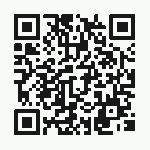 If you haven’t noticed, the world has been positively overrun by a multitude of small, black and white boxes. Before you start to freak out, though, these are not marks of the beast, nor are they designed to track your movements in a constant report to the FBI. Instead, these checkerboard patterns are what we’ve taken to calling the ye olden “QR Code.â€
If you haven’t noticed, the world has been positively overrun by a multitude of small, black and white boxes. Before you start to freak out, though, these are not marks of the beast, nor are they designed to track your movements in a constant report to the FBI. Instead, these checkerboard patterns are what we’ve taken to calling the ye olden “QR Code.â€
“What in the world is a QR code?†you might be asking. If you are, then stick around a while. We’ll be talking about the data platform at length, as well as why they’re essential to the modern web design, including creative ways to integrate them into your existing content. To kick things off, let’s dive into some introductions:
What Is A QR Code?
Alright, so the exact science of how a QR code operates is a bit tricky, so instead of covering the micromanagement details, we’ll just give you the overall picture: A QR code is a visual representation of some kind of data. This data is displayed in a graphical format that’s, essentially, encoded but can be decoded by a dedicated reader. This would be a QR scanner, which every major smartphone comes stock with. The actual data contained within a QR code varies, but can be anything from a simple message to a complex URL leading to a product. The possibilities are nearly endless, allowing for a multitude of customization in design.
How Should I Use QR Codes, And Why?
If you aren’t already using QR codes in your design, then you’re missing out on a lot. QR codes are great for a lot of content, and are a fantastic way to flesh out a project in a pinch. For example, if you’re creating print media for a client (say a business card) and want to save space by removing some copy, a QR code is an immediate solution. Find a quick QR generator on the net, and then paste that sucker straight into your design. Your viewers are free to scan it and receive the extra information, all without taking up too much space in your original project.
Other places you can use a QR code include: Product links in advertisements, clever hidden messages in street art, acrylic stickers lacquered onto packaging, a URL code attached to a company envelope, etc. The possibilities are nearly endless, and as the designer, it’s up to you to discover how your designs can best be improved by this technology.



